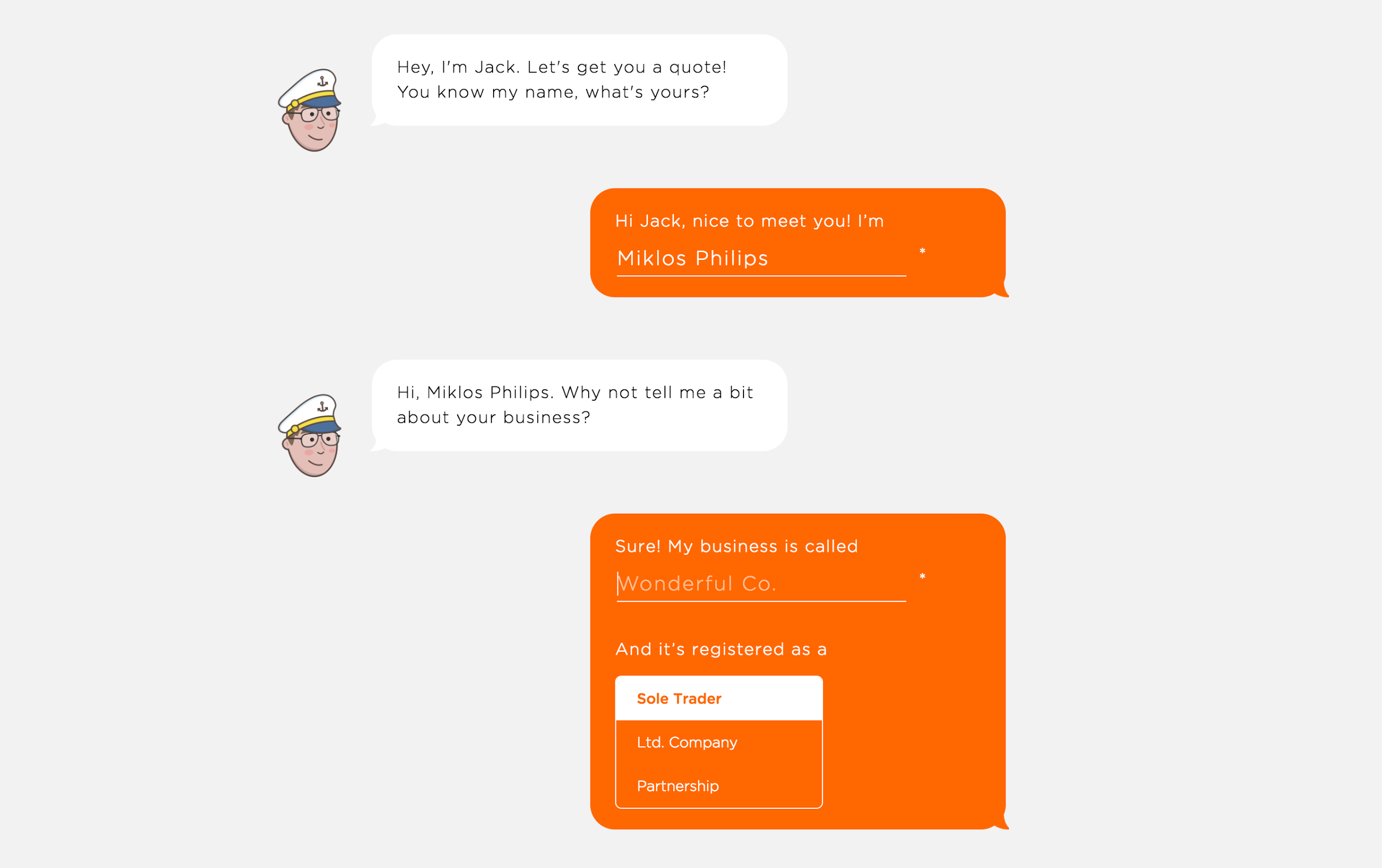A robot that chats. Sounds simple enough to understand, right? In reality, confusion still circles around chatbots and how they work. From your gran to your colleague in HR, not everyone “gets” chatbots yet.
But it’s more and more useful to brush up. After all, chatbots are everywhere nowadays. From our social media activity to our pizza orders, chatbots are versatile, helpful, and getting better with each passing day.
That still doesn’t mean everyone knows what they are. It doesn’t mean everyone understands them.
So, whether you’re looking to explain chatbots to a non-techie, or get a simple overview for yourself, here’s how to explain chatbots in a way that anyone can understand.
What chatbots are
When wondering how to explain chatbots, a good place to start is by defining what chatbots are on the easiest level possible.
A chatbot is a computer program that you can have a conversation with. Chatbots can have robotic bodies. However, it’s far more common for them to be basic programs on a website or an app. This way, you can interact with a digital platform by typing in your questions and getting answers.
You connect with chatbots through a chat window. For example, by clicking on a ‘live chat’ button on a company website, or by using a dedicated messaging platform like Facebook Messenger.
Then, you interact with a chatbot by talking to it. Most of the time, chatbots communicate in writing. You write a message, and the chatbot sends a message back in response.

Recently, you might also interact with a chatbot via voice commands. Think Siri on your iPhone, or Alexa with Amazon Echo.
Through chatting, chatbots can help complete a wide variety of tasks, offering services that range from fun to functional.
Types of chatbots: how they work
Next when determining how to explain chatbots is to explain their different types. In general, chatbots come in two flavours.
1. Rule-based chatbots
Rule-based chatbots are your standard, simple bots. They work by following conversational rules. So, they don’t “think for themselves”, and instead just trot off answers that they’ve been programmed to say.
Rule-based chatbots have a limited bank of responses that they’re able to provide. The response they send is based on a keyword or phrase that you type in.
For example, you type in a message containing the phrase ‘opening hours’ to a rule-based chatbot. The chatbot has been programmed to recognise that phrase, and this triggers it to fire back a message showing company open times.
2. AI-based chatbots
The second type of chatbot is the chatbot that uses artificial intelligence. Artificial intelligence is the name given to computers that can appear intelligent and human-like in their abilities.
AI chatbots use machine learning to make their conversations seem more natural. This means that they will remember the things you have said to them, and be able to recall that information if needed. So, you feel more like you’re talking to a human rather than a bot.
AI-chatbots have a broader range than rule-based chatbots. They still use rules – if you type this phrase, the chatbot is programmed to send back that message.
But, they’re more flexible, and can echo a conversation rather than just reeling off answers.
Types of chatbots: topics they cover
When considering how to explain chatbots, you might also choose to group them based on the topics they cover.
1. Specialised chatbots
Specialised chatbots are very good at what they do, and very bad at everything else. A specialised or niche chatbot is one that’s created to talk about and help with one specific task or topic.
For example, a chatbot might be designed to tell you the weather when asked. It would be awesome at telling you the weather, not so great at talking about football. (These chatbots tend to be rule-based.)
2. Generalist chatbots
Generalist chatbots aim to be capable of talking about almost anything. Instead of serving one specific function, these chatbots are designed to help with multiple tasks. A good example would be Alexa or Siri.
They can help you send a text, play music and tell jokes. Generalised chatbots are more often AI-based, as they need to absorb new information and understand multiple topics – which is difficult for chatbot creators to make rules for.
How to explain chatbots: what they’re used for
Still umm’ing and ahh’ing over how to explain chatbots to your gran? You should also mention their typical uses.
Chatbots can be created to talk about, and assist with, almost anything. As such, they’re used across a wide range of industries and needs.
For example, you might have a bot designed to help you with banking, take your food order, or give you legal advice.
Then, you have customer service chatbots. Chatbots in customer service are capable of supporting the service team with their simple tasks. For example, they can answer FAQs and direct customers to the web page they want. They can also act as a website receptionist, finding out information and sending the customer to the best-suited agents.

Jack, an insurance chatbot 
Eviebot, a chatbot with a human avatar
Cora, a "digital human" banking bot 
A hybrid chatbot that tag-teams with humans
Then, there are chatbots designed for entertainment purposes. These are novelty chatbots that you can chat to as you might a friend. They’ll engage in small talk or even just send you jokes at your request.
You'll also find companion chatbots used for mental health, chatbots used in ecommerce as sales assistants, pharma chatbots that assist with healthcare admin, internal chatbots that support employees, video chatbots that replicate humans, and more.
In short, chatbots are pretty versatile. If an interaction involves chat, there's a use case for a chatbot.
How to explain chatbots: limitations
By now, your gran might be thinking that chatbots can just about do anything. So, it’s also important to mention their shortfalls.
Chatbots are limited to their niche, and they can only handle simple requests and conversations. They can’t cope outside of their programmed comfort zone, and they can’t manage complex queries.
A chatbot isn’t a conversationalist. It can talk to you, but only within a set range. It’s only got so many answers to give. It’s like a record with only so many songs; a parrot with only so many party tricks.
That doesn’t mean they aren’t useful, and they can help you with lots of tasks.
With artificial intelligence, chatbots might even be able to hold intricate conversations with us one day. But for now, they’re restricted to being interactive tools to help us with simple questions and queries.
Chatbots explained
Chatbots are an expansive topic, and they seem to be here to stay. Hopefully with this article, working out how to explain chatbots to your gran, your technophobic friend, or whomever else you want, won’t be such a challenge.
So, now you know how to explain chatbots, what are you waiting for? Get out there and spread the knowledge!



